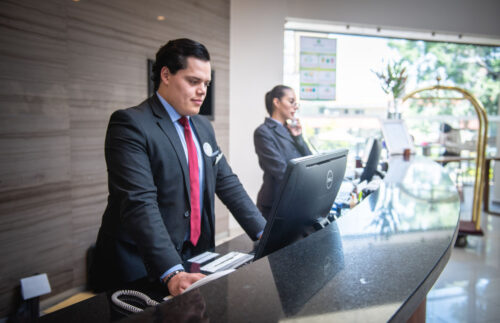Remote temperature monitoring: The benefits, the risks, and finding the right balance
Written by Natalie Stanton, Chartered Environmental Health Officer
Technology has transformed the way food businesses manage safety and, in my opinion, for the better.
From digital checklists to Bluetooth probes and automated temperature sensors, there are now countless clever tools and devices that take much of the headache out of compliance for chefs and managers alike. They help free up time so people can focus on what they do best: serving great food to their customers.
In this blog, we’ll be focusing on remote temperature monitoring systems: what they are, the benefits they bring, the risks to be aware of, and how to find the right balance between technology and human oversight.
What is a remote temperature monitoring system?
In this context, a remote temperature monitoring system is a digital setup that uses sensors to continuously track and record the temperatures of fridges, freezers, or other food storage areas, automatically sending alerts or reports to a central dashboard or app when readings fall outside safe limits.
The benefits of remote temperature monitoring
Remote temperature monitoring offers convenience, real-time data, and time saving. When set up and maintained properly, these systems can provide an excellent early warning for issues such as equipment failure or temperature fluctuations, helping food safety issues to be identified quickly so that corrective action can be taken before food becomes unsafe or before unsafe food reaches customers. For multi-site operations or large kitchens, they can also give managers a bird’s-eye view of performance across locations allowing for trends to be spotted.
The risks of remote temperature monitoring
Problems can arise when these systems are treated as infallible. For example; batteries can fail, sensors or probes can be dislodged, moved or placed in the wrong part of a fridge. Alerts can be missed or ignored. Without manual verification, these faults may go unnoticed until it’s too late.
Remote systems measure temperatures, but they don’t see what’s happening in the kitchen. Sometimes carrying out manual checks can allow other issues to be spotted. For example; a chef or manager physically checking a fridge will notice things a sensor can’t, such as damaged seals, cross-contamination issues, or poor stock rotation.
As an Environmental Health Officer, I’ve seen many examples of technology being used correctly and a few where it wasn’t. In one case, a site had a remote temperature monitoring system, the alarm was going off indicating an issue with the fridge temperature, but no one was responding. Either people had become immune to the sound of the alarm or the right people weren’t being notified. That’s not a failure of the technology itself, but of the system around it. Any tool is only as good as the culture, processes and training that support it.
Technology should support, not replace human oversight
Remote monitoring can absolutely enhance food safety standards when it’s supported by manual checks and verification and a strong culture of accountability. For example, using an automated system for overnight temperature logging is an excellent way to maintain control when the business is closed. Many systems can link directly to a manager’s phone, allowing action to be taken immediately if a problem arises during the night, something that simply isn’t possible with manual checks alone. However, it’s worth thinking about what happens when that manager goes on holiday. If they’re relaxing on a beach and not checking their phone, those critical alerts could easily be missed unless there’s a suitably trained backup person in place to monitor them and take action if necessary.
It’s still advisable to manually check fridges or freezer temperatures periodically to ensure automated readings remain accurate. Manual checks not only help to validate the data but also keep team members engaged and observant. Regular hands-on checks also reinforce what’s learnt during food safety training, including the importance of food safety, temperature control, and critical temperatures.
Finding the right balance
The safest and most compliant approach is to blend technology with human oversight. Technology makes compliance easier, it can give businesses peace of mind, but it shouldn’t give a false sense of security.
Remote systems can help identify patterns, demonstrate due diligence, and save time, but they should never be the sole safeguard. Businesses should, regularly verify sensor accuracy with manual checks and train staff to interpret data and respond to alerts effectively.
When used as part of a balanced approach, combining digital tools with hands-on checks, businesses can achieve the best of both worlds: efficiency, accuracy, and true confidence in food safety.






